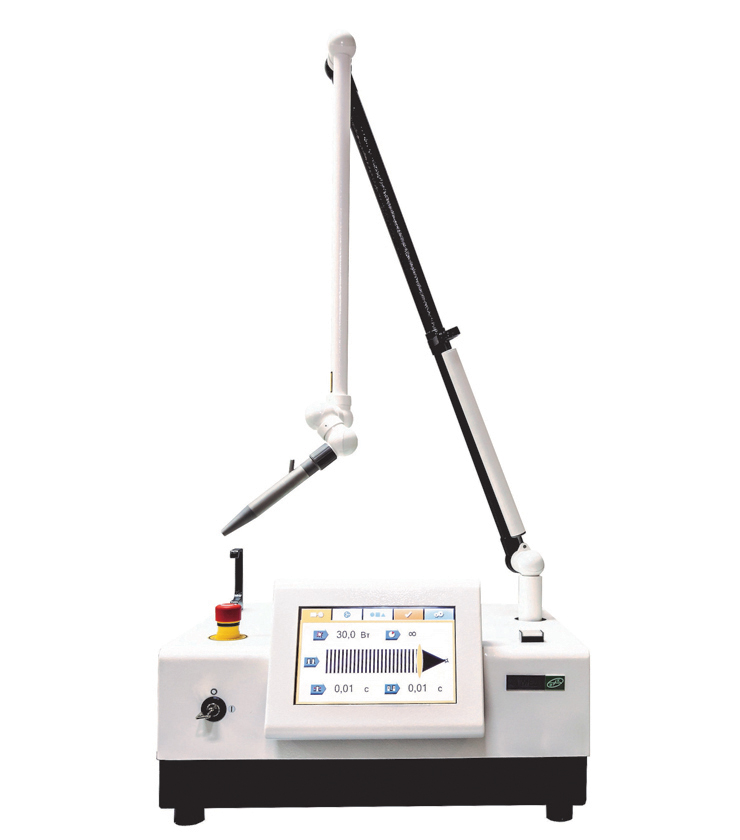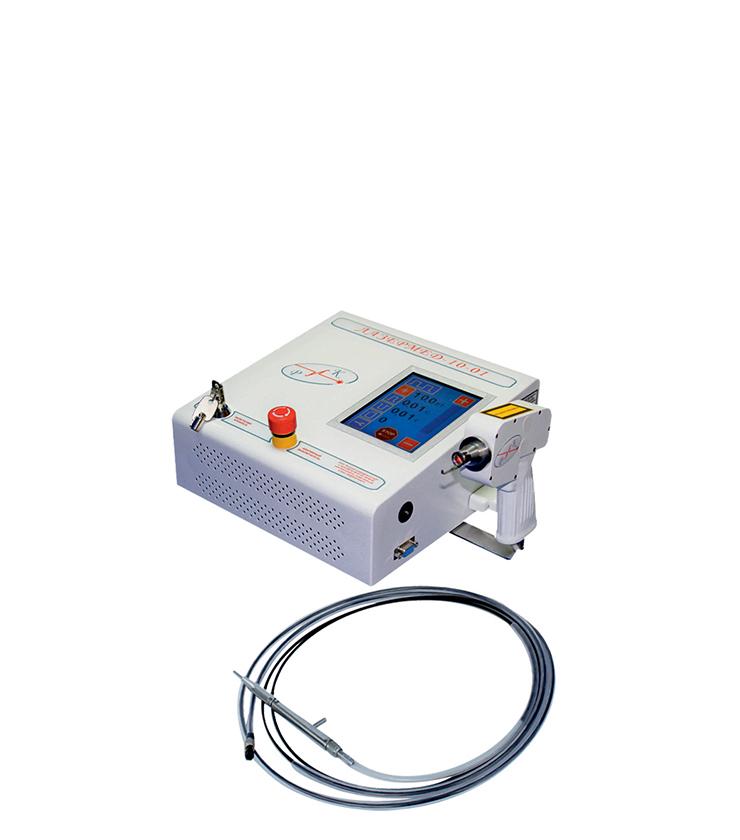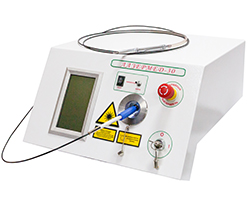







Experience with laser units in the outpatient setting is still little so far; however, the prospects for laser surgery in the outpatient setting are highly promising. In the surgical units of polyclinics, it is most expedient to employ a small-sized Lancet LSA which takes little space, it is rather mobile, requires no water cooling and has the power ample for making virtually all outpatient surgical interventions. The time for preparing a laser unit for operation is no more than 2 minutes and middle-levelled medical staff can made the unit ready. The average time of outpatient surgeries using the standard kit of surgical instruments is 25-30 min sec. The time required for an outpatient operation using the laser averaged 16±3 min (O.K.Skobelkin et al, 1987). The surgical time decreases due to adequate hemostasis which is made concurrently with tissue dissection.
Carbon-dioxide laser radiation which produces a pronounced and effective hemostasis, a bactericidal effect, has the capacity of vaporizing the abnormally changed tissues, as well as the use of photohydraulic dissection have great advantages over the traditional methods of outpatient surgical interventions. This facilitates the procedures for re-moval of tumors measuring as large as 2.5 cm by their vaporization, reduces the time of operation preparation and performance, extends the capabilities of visual control on tumor vaporization, which is an important factor of prevention of recurrences of tumor growth.
In addition, laser radiation assures a sound debridement of a purulent wound by vaporizing pyonecrotic tissues and sterilizing the wound surface. In the postoperative period, the pain syndrome diminishes, the frequency of dressings decreases, the postoperative management of patients becomes simpler.
A great variety of surgical interventions using a Lancet LSA can be made in the outpatient setting. These include removal of benign superficial tumors of soft tissues, (lipomas, atheromas, fibromas, hygromas, osteophytes of the phalangette) interventions for pyoinflammatory diseases of the skin, subcutaneous fat, and bones, accidental soft tissue wounds, sluggish wounds and trophic ulcers, onychocryptosis, etc.
The specific features of the use of a Lancet LSA while removing benign skin tumors, treating hyperkeratosis, warts, cutaneous horn, capillary hemangiomas, limited pyoinflammatory diseases of soft tissues, accidental wounds, sluggish wounds and trophic ulcers, onychocryptosis, etc. are detailed in items 6.4 and 6.5 of this manual. It should be noted that the scope of surgical intervention and the choice of anesthesia in the outpatient setting are determined on an individual basis, by taking into account the pattern of a pathological process and the patient's status. The predicted possibility of expanding the scope of surgical intervention and complications require the patient's hospitalization and operation performance under general anesthesia in the inpatient setting.
If the parameters are correctly chosen and the pa-tient's status is properly evaluated, the use of Lancet LSA during surgical interventions in the outpatient setting may improve the cosmetic results of operations, show a 1.8-fold decrease in the time of patients' disability.